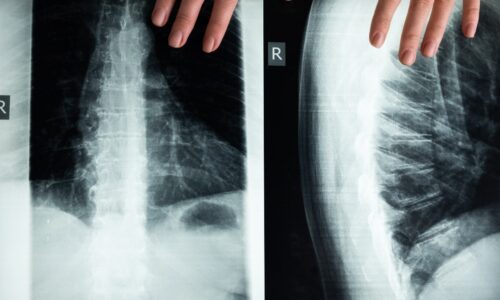Types of Fractures |
There are some types of fractures. One is wedge/vertebral fracture, it usually occurs in the front of the vertebra; another one is crush fracture, when the entire bone breaks, rather than just the front of the vertebra. Burst fracture is another type, which involves some loss of the height in both the front and back walls of the vertebral body.
Noel Gressner, Physical Therapist at Miami Orthopedics and Sports Medicine Institute, says sudden onset back pain, limited spinal mobility, height loss and deformity and disability are symptoms of vertebral fractures.
Transcript
Let’s do a little education on fractures 101 we’ve got three common ones so let’s show our graphic and maybe you could just walk us through this real quick wedge vertebral fracture. fracture moreso where the the vertebra is can be going in more of a forward angle inclined more narrow in the front and more thicker in the posterior part of the vertebra. Crush fracture? It’s where the entire bone it was gonna break not just the front of the vertebra such as in the wedge high pressure and burst fracture where you’re gonna have lots of heights both in the front and the back walls of the vertebral body. Alright and then we have another graphic to show some of the more typical compression fracture symptoms which is more common right would you agree? Dependent upon what activity in terms of a compression fracture if you’re a military person you’re jumping out of planes then you subject to compression type of fractures or motor vehicle accident less like maybe football collision head-on collision spearing those type of type of injuries. So these are symptoms of vertebral fractures sudden onset of back pains? An onset of back pain standing walking often makes pain worse which can also be a component of you may be with someone of a degenerative type of symptoms as well lying on the back makes one pain less intense so sometimes rest can help sometimes lying in that position can also provoke depending upon what the injury is limited spinal mobility and and there’s where we go to degenerative types of conditions hi floss which can happen as people age at secondary to osteoporosis and deformity and stability meaning a deformity in a fracture and then causing you to be able to stand in a particular posture to accommodate for and that injury try to offload the pain.








